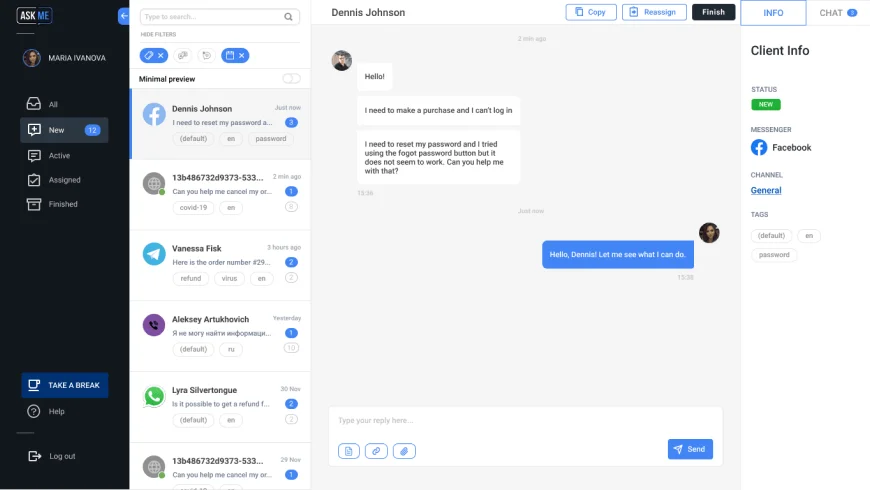A homepage features a map that sends visitors right to the cities they want and video. This IA allows a user to access the information from the home page. Information architecture (IA) refers to the structure, organization, information architecture web design and labeling of information within a product or website. In UX design, designers conduct extensive research and testing to plan how to best organize information so users can easily complete their goals.
If a user can find what they are looking for on a website, there naturally won’t be as many customer support tickets. “Like a librarian, [the designer] knows where everything belongs,” she said. There are several ways to define or conceptualize what information architecture is. Naema Baskanderi, a senior product manager at the online auto marketplace Adesa, relates information architecture to a library. Unlike an open card sort, all the participants do in this exercise is organize their cards of topics under already established labels.
What is Information Architecture (IA)?
During usability testing, participants are required to interact with your product in a typical way, like they would’ve done in real life. Obviously, they can’t find the answers as the content is not ready yet, but they can still indicate their course of action while interacting with your future product. Testing activities can be conducted at different stages of the design process to guide designers and polish IA. They are often a part of the research phase, especially if you’re looking for ways to redesign an existing app or website.
- This is where the analysis process begins, as part of IA design.
- However, it’s imperative to test your information architecture as soon as the prototype is ready and before it gets to the development team.
- Therefore, Information Architecture combines users and their needs, business goals, and content.
- A sitemap lists all the pages and presents the hierarchy and structure between them.
- We focus on determining how useful, accurate, and overall how effective the content is.
For that reason, the first step in designing a website with information architecture principles is to define your goals to ensure your design delivers what you aim to accomplish. In our modern world, people expect to find a solution to their problems within minimum time and effort. What’s more, after an unpleasant experience with the product, users will unlikely return to it ever again. Creating personas, a hypothetical narrative of your various website users, is another great way to figure out how best to structure the site’s content.
Flow Design Processes – Focusing on the Users’ Needs
Understanding the users’ intends and needs helps product teams build the most relevant information architecture that allows for intuitive navigation and excellent user experience and usability. If you don’t have the time or resources for usability testing, you can launch your new IA and then make revisions based on your data. Keep in mind that this approach can impact SEO and user experience while you work out any issues. When creating a digital product, you have to structure your content and functionality in a way that users understand. Users should be able to quickly and easily find the information they’re looking for — the practice of organizing content this way is called information architecture. As an ever-evolving practice, IA design is an art as much as a skill, which is partly why large corporations have information architect positions.

Video Production, Kinetic Typography, Company Presentation Video, Micro Content Videos for search & Facebook, Vine and Instagram, social campaigns. Offering the highest of quality freelance creative design and marketing services with round’ the clock availability. I’m in front of my laptop 12+ hours a day, so hit me up anytime. Special thanks go to information architect Adelle Frank for her help with this article. Rosenfeld and Morville are authors of a book titled “Information Architecture for the World Wide Web.” The cover of the book, like other O’Reilly publications, features a drawing of an animal. Due to its popularity in the IA community, the book is known primarily in reference to that animal as the polar bear book.
Information Architecture Is Ever-Changing and Evolving
Therefore, we should never forget that knowing the users and their information seeking behaviors is the key to success. Once we know our users’ needs we can we can prioritize which architectural components to build. The first work should include structuring the information on the page, developing navigation, and naming the https://www.globalcloudteam.com/ labels. The next step should be to test the IA on the users, for example using card sorting. By using them, we define a visual hierarchy of information on the page as well as connections between subsequent views of the application. A well-designed Information Architecture creates an intuitive and efficient User Experience.

With a solid, organized foundation for your site, changes can be made in a cost-efficient and timely manner, too. Your information architecture strategy sits at the center of this Venn diagram. By accounting for your users, your content, as well as the context within which your website operates, you can craft a well-balanced website. Often, people understand information architecture as a menu design on a website or in an app. However, this is a much broader term, and menus take only one part of it.
Create Categories
Carrie Webster, a Sydney-based UX consultant writing for Smashing Magazine, cautions that too many options can lead to “choice deferral,” where a user chooses not to make a decision at all. Depth-based scrolling allows new information to enter the user’s field of vision horizontally. For instance, “moms-to-be shopping for baby clothes.” A user persona provides you with a complete description as well as a face and name to that fictional user. Users decide to do extensive research on some topic and want to find as much info as possible when visiting a website/app. When you enroll in the course, you get access to all of the courses in the Specialization, and you earn a certificate when you complete the work.
And this isn’t just a ‘man thing.’ After a while, people just give up and move on. Just the thought of this question conjures up about a hundred different ways to answer because depending on the users you ask and how they use the skill, you’ll likely get a hundred different answers. Finding a solid information architecture definition is like asking someone how to catch a cloud and pin it down. The larger point may be that users are idiosyncratic in their preferences, and site design needs to be responsive to these differences. While duplication of information is generally considered a hallmark of poor design, dual navigation is often an asset.
FAQs about information architecture
To figure out the context, consider where, when, why, and how the user is seeking out and engaging with your content. The homepage will always be the homepage, but where it leads, how users get to those places, and everything in between and beyond is determined later. Using four shapes, no color, and smartly-placed text snippets, every major interaction is understandable without prototypes, and more importantly, it can be understood by anyone working on it.

Below is the IA for the mobile app of a client that design agency Pixel Fridge worked with. The six purple boxes represent the major sections of the museum’s website — but user research and testing showed that not all six were considered equally important. Since a website’s content structure depends on the specific needs of the user, no structure will look exactly the same. The IA of an ecommerce store can look completely different from a blog and still meet users’ needs.
Create user personas
When an IA has to change, the architect must consider not only how to update the model, but also whether to update the software used to manage the information system. Besides CMSes, other software can be used to implement some or all of an IA. For example, some blog software like WordPress and wiki software like MediaWiki behave as CMSes, though they have more limited options for storing, categorizing and presenting information. A document management system (DMS) is similar to a CMS, but limited to certain types of information.